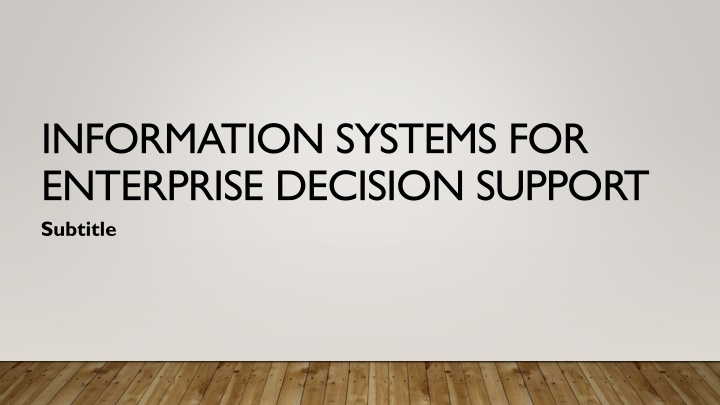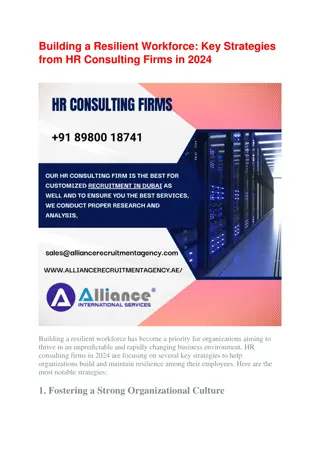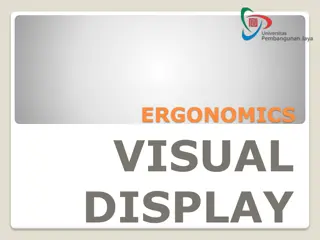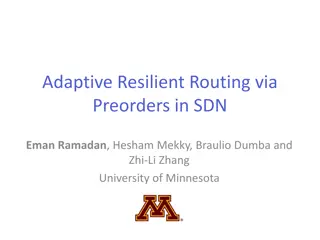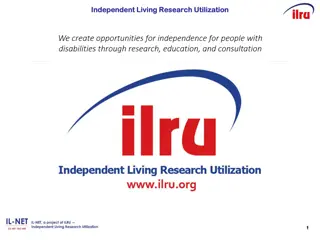Auditory Attention Resilient to Distraction Than Visual Attention
Auditory attention has been found to be more resilient to distraction compared to visual attention, as indicated by a study on Competing for Attention with a sample size of 305. In another study, creativity is highlighted as the most significant factor in boosting advertising profitability. The impact of 30-second ads, the importance of late evenings and weekends for targeting specific audiences, and the rise of electric/hybrid vehicles in TV advertising are also discussed. Insights on sustaining brand equity and effective budget allocation strategies are provided, offering valuable perspectives for marketers and advertisers alike.
Download Presentation

Please find below an Image/Link to download the presentation.
The content on the website is provided AS IS for your information and personal use only. It may not be sold, licensed, or shared on other websites without obtaining consent from the author.If you encounter any issues during the download, it is possible that the publisher has removed the file from their server.
You are allowed to download the files provided on this website for personal or commercial use, subject to the condition that they are used lawfully. All files are the property of their respective owners.
The content on the website is provided AS IS for your information and personal use only. It may not be sold, licensed, or shared on other websites without obtaining consent from the author.
E N D
Presentation Transcript
INFORMATION SYSTEMS FOR ENTERPRISE DECISION SUPPORT Subtitle
WHAT ARE ENTERPRISE DECISION SUPPORT SYSTEMS? Enterprise Decision Support Systems (EDSS) are computer- based systems that support decision-making activities within an organization. They provide managers and executives with the necessary information and tools to make informed decisions that align with the organization's goals and objectives
KEY FEATURES OF EDSS Data Integration: EDSS integrate data from various sources within the organization, such as databases, spreadsheets, and external data feeds. Analytical Tools: EDSS provide a range of analytical tools to help users analyze and interpret data, such as data visualization, statistical analysis, and predictive modeling. Decision Models: EDSS incorporate decision models that capture the logic and rules used in decision-making processes, enabling users to simulate different scenarios and evaluate potential outcomes. User-Friendly Interface: EDSS have user-friendly interfaces that allow non-technical users to easily access and interact with the system. Collaboration and Communication: EDSS facilitate collaboration and communication among decision-makers by enabling them to share information, discuss alternatives, and track decision-making processes
TYPES OF EDSS Executive Information Systems (EIS): EIS provide top-level executives with summarized information and key performance indicators to support strategic decision-making. Management Support Systems (MSS): MSS assist middle-level managers in making tactical and operational decisions by providing detailed reports and analysis. Group Decision Support Systems (GDSS): GDSS facilitate group decision-making by providing tools for brainstorming, discussion, and consensus-building. Geographic Information Systems (GIS): GIS integrate spatial data and provide decision support for location-based analysis and planning. Knowledge-Based Systems (KBS): KBS use artificial intelligence techniques to capture and apply expert knowledge in decision-making processes
BENEFITS OF EDSS Improved Decision-Making: EDSS provide timely and accurate information, enabling better decision-making and reducing the risk of errors. Increased Efficiency: EDSS automate repetitive tasks, streamline processes, and reduce the time required for decision-making. Enhanced Collaboration: EDSS facilitate collaboration and knowledge sharing among decision-makers, leading to more informed and consensus-driven decisions. Competitive Advantage: By leveraging data and analytics, EDSS can help organizations gain a competitive edge by identifying opportunities, optimizing resources, and mitigating risks. Adaptability: EDSS can adapt to changing business conditions and evolving decision-making needs, ensuring organizations stay agile and responsive
CHALLENGES OF IMPLEMENTING EDSS Data Quality and Integration: Ensuring the accuracy, completeness, and integration of data from different sources can be challenging. User Adoption: Encouraging users to embrace and effectively use the EDSS may require training, change management, and addressing resistance to new technologies. System Complexity: Developing and maintaining EDSS can be complex, requiring expertise in data management, analytics, and system integration. Cost: Implementing and maintaining an EDSS can involve significant costs, including hardware, software, and personnel. Security and Privacy: Protecting sensitive data and ensuring compliance with data protection regulations is crucial when implementing EDSS
EXAMPLES Walmart: Walmart uses an EDSS to optimize inventory management, pricing, and supply chain operations, resulting in improved efficiency and cost savings. Amazon: Amazon's recommendation system, powered by an EDSS, analyzes customer data to provide personalized product recommendations, enhancing the shopping experience. Procter & Gamble: P&G implemented an EDSS to analyze sales data and optimize product promotions, leading to increased sales and profitability. Delta Air Lines: Delta uses an EDSS to optimize flight scheduling, crew assignments, and fuel consumption, improving operational efficiency and customer satisfaction. Starbucks: Starbucks utilizes an EDSS to analyze customer preferences, market trends, and store performance, guiding strategic decisions and new product development
FUTURE TRENDS IN EDSS Big Data Analytics: EDSS will increasingly leverage big data analytics techniques to extract valuable insights from large and diverse datasets. Artificial Intelligence: AI technologies, such as machine learning and natural language processing, will enhance the capabilities of EDSS, enabling more advanced decision support. Cloud Computing: Cloud-based EDSS will become more prevalent, offering scalability, flexibility, and cost- efficiency. Mobile Access: EDSS will be accessible through mobile devices, allowing decision-makers to access information and make decisions on the go. Integration with Internet of Things (IoT): EDSS will integrate with IoT devices to collect real-time data and enable proactive decision-making
